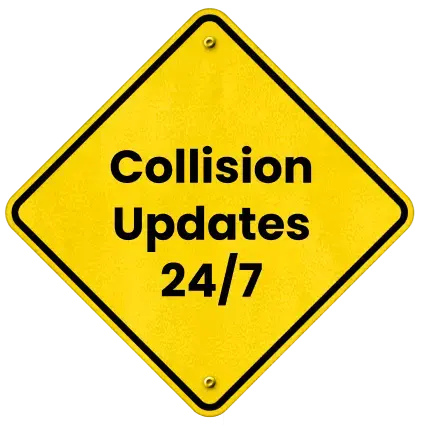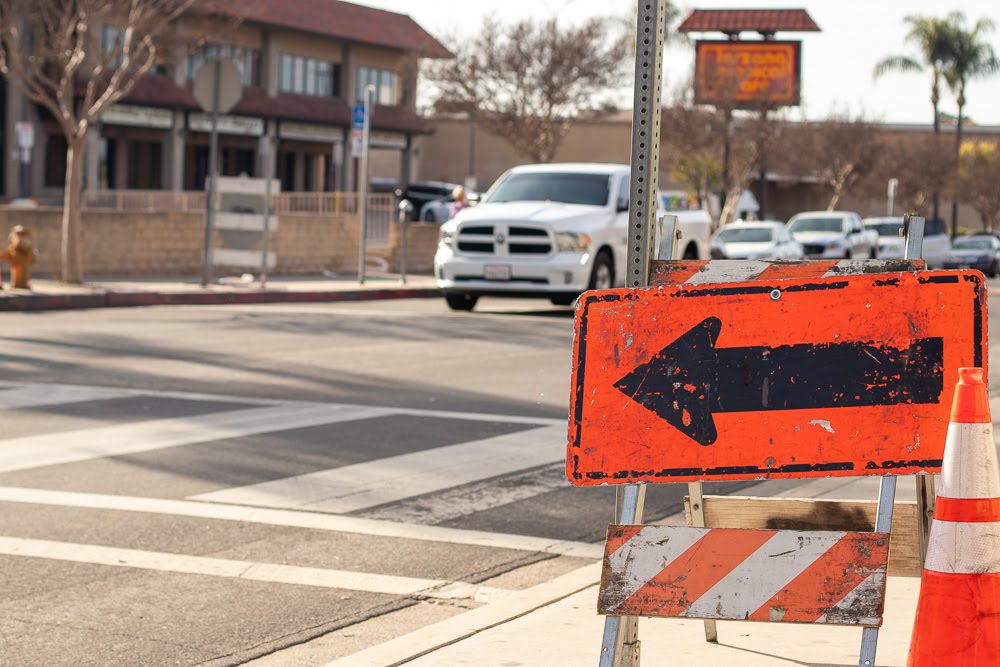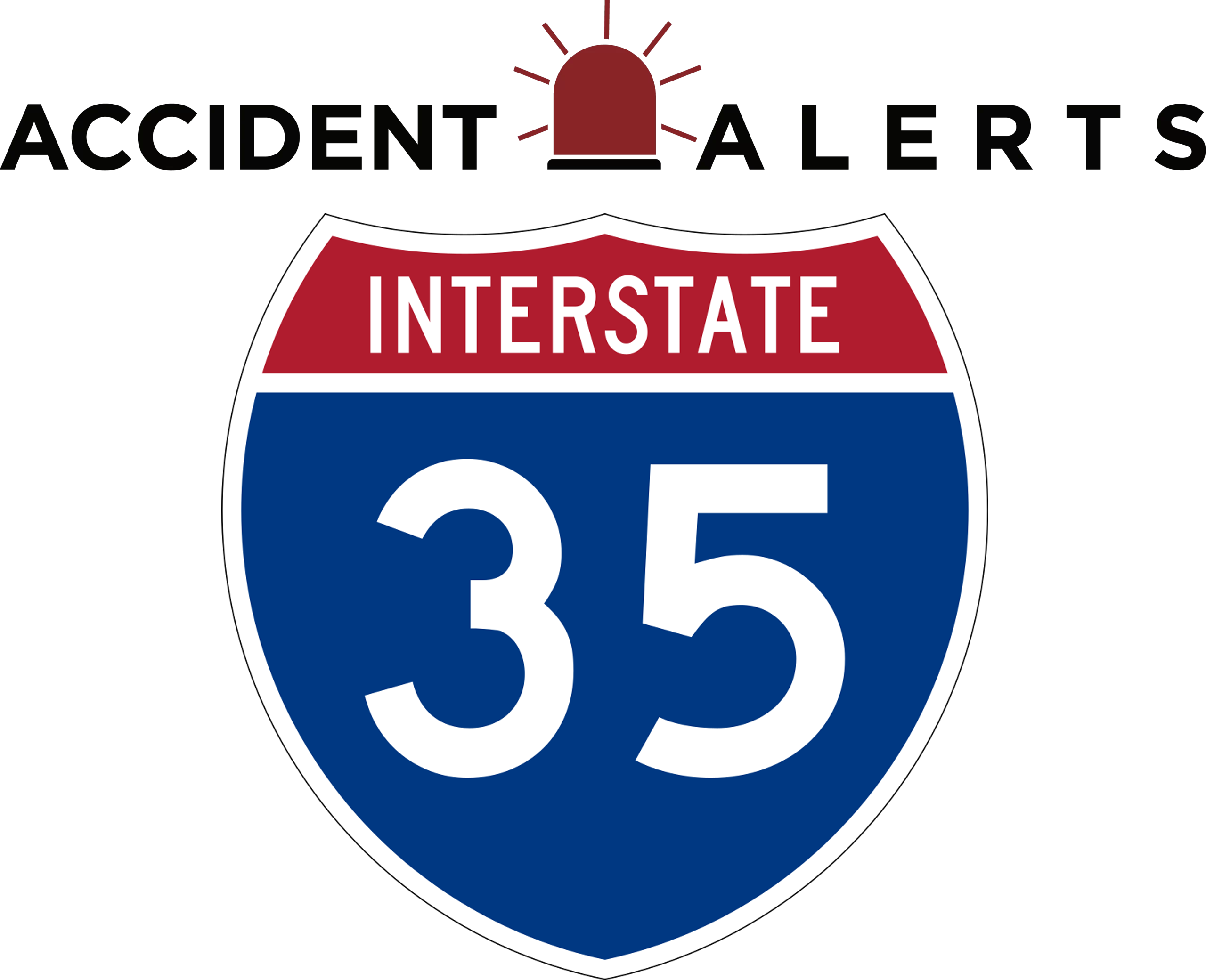
Work-Zone Crashes on I-35 Expansion Projects


Interstate 35 (I-35) is a critical north-south artery connecting Laredo, Texas, to Duluth, Minnesota, carrying a mix of commuter, commercial, and long-distance traffic.
As traffic volumes continue to rise, expansion and maintenance projects are frequent along the corridor. While these construction efforts are essential for roadway safety and efficiency, they introduce hazards that increase the risk of work-zone crashes. Drivers navigating these areas face narrower lanes, shifting traffic patterns, and reduced shoulders, all of which demand heightened awareness.
Understanding the causes, liability considerations, and proper documentation is crucial for both motorists and truck operators traveling on I-35 during construction periods.
Why I-35 Work Zones Are High-Risk Areas
Work zones on I-35 present unique challenges due to both human and environmental factors. Lane reductions and temporary detours compress traffic into a limited space, making sudden lane changes or braking dangerous. Reduced shoulder widths leave little room for driver error, and proximity to heavy machinery increases the risk of severe accidents.
Speeding or distracted driving in these areas can quickly escalate into multi-vehicle collisions. Furthermore, variable traffic density, such as merging commuter vehicles and large trucks, adds complexity to navigating these zones safely. Weather can exacerbate these risks, with rain, fog, or icy conditions reducing traction and visibility. Drivers unfamiliar with a construction site may be particularly vulnerable to collisions due to sudden changes in signage or lane alignment.
Several factors contribute to the high incidence of accidents in work zones:
- Lane Shifts and Narrowed Lanes: Temporary lane closures reduce maneuvering space, increasing the likelihood of side-swipes, rear-end collisions, and crashes involving large commercial trucks.
- Reduced Shoulders and Obstructions: Limited pull-off areas and proximity to construction equipment make avoiding hazards more difficult.
- Speeding or Aggressive Driving: Drivers who fail to adjust their speed or maintain safe following distances increase crash potential.
- Inattention and Distractions: Glancing at construction equipment, signage, or nearby traffic diverts attention from the road, often with severe consequences.
- Poor Weather Conditions: Rain, ice, and fog make it harder to maintain lane position and react to sudden stops or shifting traffic.
Even small lapses in judgment can have significant consequences when lanes are narrowed and construction crews are present.
Preventing Work-Zone Accidents on I-35
Motorists can take proactive steps to reduce their risk in I-35 construction zones.
Slowing down and obeying posted speed limits is paramount, as reduced speed gives drivers more time to react to shifting lanes or sudden stops. Maintaining a safe following distance from other vehicles, especially trucks, allows room to maneuver safely if traffic suddenly slows. Remaining alert and minimizing distractions, including cell phone use and in-cab technology, is critical in work zones where conditions can change rapidly. Merging early and safely helps prevent bottlenecks that often trigger collisions.
Additionally, staying informed about current construction projects and delays using official DOT resources allows drivers to plan alternate routes or travel during off-peak hours.
Contractor vs. Driver Liability in Work Zones
Determining liability in I-35 work-zone crashes can be complex. In many cases, both the driver and the contractor or construction company may share responsibility.
Contractors are required to adhere to safety standards, properly mark lanes, and maintain clear signage and barriers. Failure to provide adequate warning signs, poorly marked detours, or unsafe lane reductions can make a construction company partially liable.
Drivers, however, are expected to exercise reasonable care, adjust their speed, follow posted signs, and avoid distractions. Courts and insurance companies often examine factors such as speed, vehicle control, lane adherence, and compliance with traffic laws when determining fault.
In some cases, liability may be shared, requiring careful documentation and expert testimony to clarify contributing factors.
Essential Documentation After a Work-Zone Crash
Proper documentation is critical after a construction-zone accident. Collecting the right evidence not only supports insurance claims but can also be essential in legal proceedings.
- Photographs and Videos: Capture damage to vehicles, skid marks, traffic control devices, lane configurations, and any obstructions or debris.
- Official Reports and Witness Statements: Police reports, witness accounts, and construction crew observations provide objective evidence of the crash circumstances.
- Maintenance and Inspection Logs: Records related to roadway maintenance or construction inspection can demonstrate whether contractors followed required safety protocols.
- Driver Records: Information such as hours of service, logbooks, and any prior incidents may be relevant for commercial drivers.
- Medical Documentation: Injury reports and hospital records document the physical impact of the crash, supporting both liability and compensation claims.
Collecting evidence promptly is essential, as conditions at the site may change quickly due to ongoing construction or traffic flow.
Real-World Example: Fatal Work-Zone Crash in North Austin
A tragic incident occurred on March 13, 2025, in North Austin when a semi-truck collided with multiple vehicles in a construction zone on I-35 southbound near Parmer Lane and Howard Lane. The crash resulted in five fatalities, including a baby, a child, and an elderly woman. The accident stretched over a tenth of a mile and involved 17 people and 18 vehicles. Investigators revealed that the crash happened in an active construction zone where lanes had been reduced from three to one, highlighting the critical importance of adhering to work-zone safety measures.
By understanding the risks, recognizing the shared responsibilities between drivers and contractors, and taking careful preventive measures, motorists can reduce the likelihood of serious incidents while traveling through I-35 construction zones. Awareness, preparation, and adherence to safety guidelines are key to protecting both yourself and others on these busy and often unpredictable roadways.
Seeking Guidance After a Work-Zone Crash
Experiencing a construction-zone crash on I-35 can be overwhelming and stressful. Professional guidance is available to help navigate insurance claims, understand liability, and preserve critical evidence.
Schedule a free consultation with an experienced I-35 accident lawyer to receive personalized advice and help clarify the steps needed to protect rights, document damages, and recover from the incident. Support is available not only for drivers but also for passengers and families affected by a work-zone crash, helping them regain a sense of control, safety, and peace of mind.
